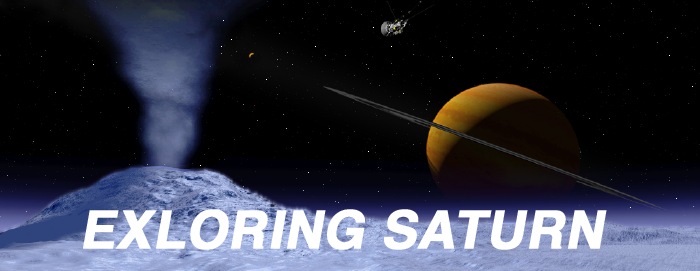 |
|||||||
| One of the Most Complex and Ambitious Ventures in the History of Space Exploration | |||||||
| Saturn | Rings | Moons | Titan | Cassini | Science | Huygens | Resources |
The farthest human-made object ever to land on a Solar System body
THE LATEST CASSINI NEWS FROM SATURN »»
SOME IMPORTANT CASSINI FINDINGS SO FAR »»
Cassini is the best-equipped spacecraft we have ever sent to another planet. One of the most powerful scientific instruments carried to Saturn by Cassini was the Huygens probe, which itself carried half a dozen sensitive instruments to study the atmosphere and surface of Saturn's giant moon Titan.
The first color picture from the surface of Titan by Huygens on January 14, 2005.
A camera aboard Huygens recorded more than a thousand images of Titan's surface and clouds. Another instrument used radio signals to measure Titan's winds. Three sensors analyzed the moon's atmosphere. Huygens survived the landing on January 14, 2005, to photograph and measure Titan's surface.
Huygens scientific instruments were:In December 2004, Cassini released the Huygens probe. The small 722-lb. cone-shaped probe coasted for three weeks as it descended into Titan's cloudy atmosphere.
- Aerosol Collector and Pyrolyser collected Titan's aerosols for chemical composition analysis
- Descent Imager/Spectral Radiometer made spectral measurements and took pictures of Titan's surface and atmospheric hazes
- Doppler Wind Experiment used radio signals to deduce wind speeds on Titan
- Gas Chromatograph/Mass Spectrometer identified and quantified various atmospheric constituents of Titan
- Huygens Atmospheric Structure Instrument measured the physical and electrical properties of the Titan atmosphere
- Surface Science Package determined the physical properties of Titan's surface
- Cassini instruments »
Three sets of parachutes deployed to slow the probe and provide a stable platform for scientific measurements. Instruments on board collected information about the atmosphere's chemical composition and the clouds surrounding Titan. The collected data was radioed to the Cassini orbiter, which then relayed the data to Earth.
About two hours after entering Titan's atmosphere, the probe landed near the moon's equator. Huygens survived the impact and then was able to communicate with Cassini for a few minutes as planned after landing on the frozen surface of Titan. Huygens was the farthest human-made object ever to land on a Solar System body.
| Top of this page | Saturn main page | The Planet | The Rings | The Moons | Solar System |
| Cassini probe | Cassini Science | Titan moon | Huygens | Internet Resources | |
| STO Cover | Search STO | Questions | Copyright 2005 Space Today Online | ||
